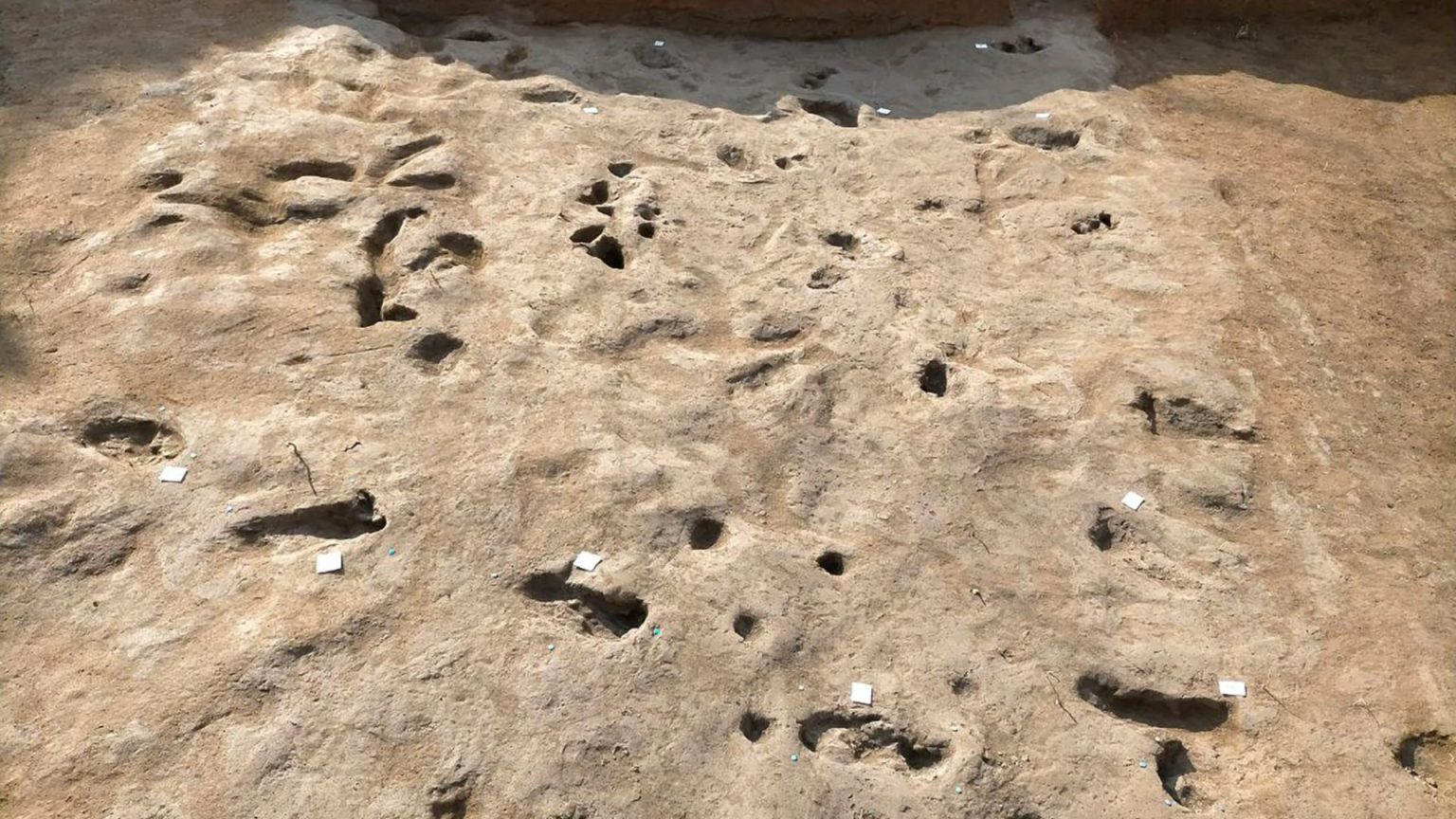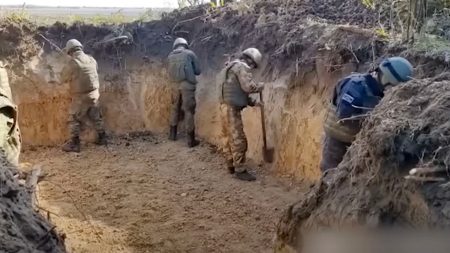The accidental unearthing of ancient footprints near Mount Vesuvius has provided a captivating glimpse into the lives and struggles of Bronze Age villagers who faced the volcano’s wrath thousands of years before the infamous destruction of Pompeii in 79 AD. The discovery, made during excavations for a gas pipeline southeast of Naples, unveils a dramatic scene of flight and survival, preserved in volcanic rock deposits for millennia. These footprints, likely imprinted as people and animals desperately sought refuge from an eruption, offer a poignant connection to a prehistoric community grappling with the same volatile landscape that would later claim Pompeii and Herculaneum.
This remarkable find is just one piece of a rich tapestry of historical treasures unearthed during the two-year excavation project. Archaeologists have uncovered a trove of artifacts spanning from the Bronze Age (3300 BC to 1200 BC) to the Late Antiquity period (250 AD to 750 AD). These relics, including miniature ceramics and pottery crafted by local inhabitants, provide valuable insights into the daily lives and cultural practices of the region’s ancient inhabitants. The excavations have also revealed a complex network of ancient roads, encompassing at least 40 routes ranging from simple dirt paths to more elaborate constructions, offering a glimpse into the infrastructure and connectivity of the area in antiquity.
Further enriching the historical narrative, the excavations uncovered several burial sites, including those marked by engraved stone slabs, which predominantly contained the remains of children. This somber discovery offers a glimpse into the mortality rates and burial customs of the ancient communities. Together, these discoveries paint a vibrant picture of life and death in the shadow of Vesuvius, long before the cataclysm that would forever etch the volcano’s name into history.
The footprints, frozen in time, represent a poignant echo of the human experience of natural disasters, a struggle that has persisted for millennia. The discovery underscores the cyclical nature of history, reminding us that the communities living around Vesuvius have long contended with the volcano’s unpredictable power. These prehistoric inhabitants, like their descendants in Pompeii and Herculaneum centuries later, faced the terrifying reality of a volcanic eruption, forced to flee their homes and livelihoods in a desperate bid for survival.
The tragic fate of Pompeii and Herculaneum in 79 AD serves as a stark reminder of Vesuvius’ devastating potential. Scientific studies have revealed the gruesome details of the victims’ deaths, with some perishing from extreme heat that caused their blood to boil and their skulls to explode. The discovery of hundreds of bodies huddled in waterfront chambers in Herculaneum, preserved in lifelike poses, paints a chilling picture of the terror and desperation that gripped the cities in their final moments.
The recent excavation of the Bronze Age footprints near Vesuvius adds a new layer of understanding to the volcano’s long and volatile history. These ancient traces of human and animal activity offer a profound connection to the past, highlighting the enduring impact of natural disasters on human populations and providing a powerful reminder of the forces that have shaped the landscape and the lives of those who have called it home. The findings underscore the importance of archaeological investigations in uncovering the hidden stories of our ancestors and enriching our understanding of the past. They provide a tangible link to the lives of those who lived in the shadow of Vesuvius millennia ago, facing the same elemental force that would later devastate Pompeii and Herculaneum.











